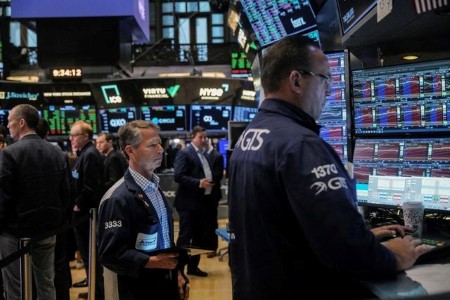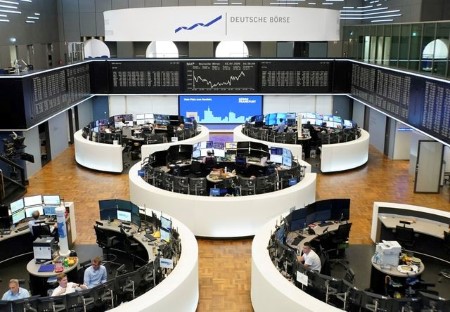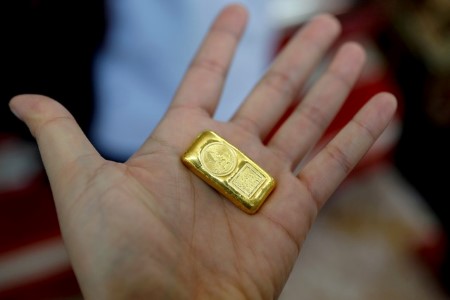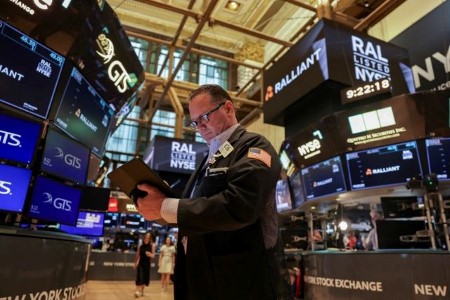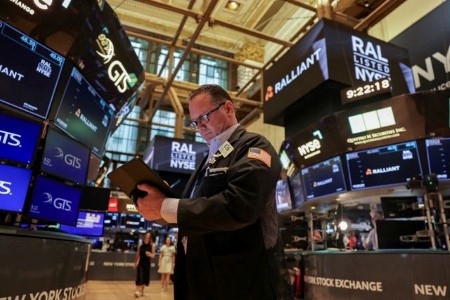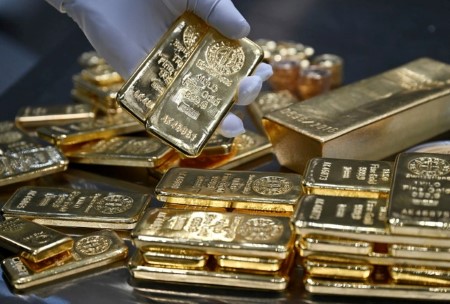NEW YORK – Major stock indexes declined while the dollar strengthened on Monday as US President Donald Trump unveiled sharply higher US tariffs on goods from Japan, South Korea, and other countries in the latest development in the US trade war.
Longer-dated US Treasury yields rose.
Trump on Monday began telling trade partners, including Japan and South Kore,a that the higher US tariffs will start August 1.
Trump in April capped all of the so-called reciprocal tariffs with trading partners at 10% until July 9 to allow for negotiations. Only two agreements, with Britain and Vietnam, have been reached.
“Trade, inflation, and earnings are going to be the next three catalysts that will drive the market higher or lower, depending on how they unfold,” said Adam Sarhan, chief executive of 50 Park Investments in New York.
“But markets like certainty, and today’s news increases the level of uncertainty, hence the selloff,” he said.
Tariffs are expected to increase prices and to slow down growth, though uncertainty over the ultimate policies may be a bigger drag as it leads businesses to postpone decisions.
S&P 500 companies next week are expected to begin reporting results on the second quarter.
The Dow Jones Industrial Average fell 422.17 points, or 0.94%, to 44,406.36, the S&P 500 fell 49.37 points, or 0.79%, to 6,229.98, and the Nasdaq Composite fell 188.59 points, or 0.91%, to 20,412.52.
US-listed shares of Japanese automotive companies fell, with Toyota Motor down 4% and Honda Motor off by 3.9%.
Also, electric vehicle maker Tesla shares fell 6.8% after CEO Elon Musk announced the formation of a US political party named the “American Party.”
MSCI’s gauge of stocks across the globe fell 5.80 points, or 0.63%, to 919.93. The pan-European STOXX 600 index closed up 0.44%.
The yield on benchmark US 10-year notes was last up 5.7 basis points on the day at 4.397%. The interest rate-sensitive two-year yield rose 1.9 basis points to 3.901%.
The dollar’s rise was most notable against the yen. It was up 1.09% at 146.130. The euro slipped 0.57% to USD 1.172, having rallied over 13% so far this year.
The dollar index, which measures the currency against six major counterparts, rose 0.517% to 97.467, reaching a one-week high.
Minutes of the last Federal Reserve meeting are also due this week. Investors are weighing how many times the Fed is likely to cut interest rates this year after jobs data for June on Thursday showed that employers added more jobs than economists had forecast.
Oil prices rose as signs of strong demand offset the impact of a higher-than-expected OPEC+ output hike for August and concerns about possible tariff impacts.
Brent crude futures rose USD 1.28, or 1.9%, to settle at USD 69.58. US West Texas Intermediate crude gained 93 cents or 1.4%, to settle at USD 67.93.
(Reporting by Caroline Valetkevitch in New York; Additional reporting by Lawrence White in London and Wayne Cole in Sydney; Editing by Cynthia Osterman and Stephen Coates)







 DOWNLOAD
DOWNLOAD




